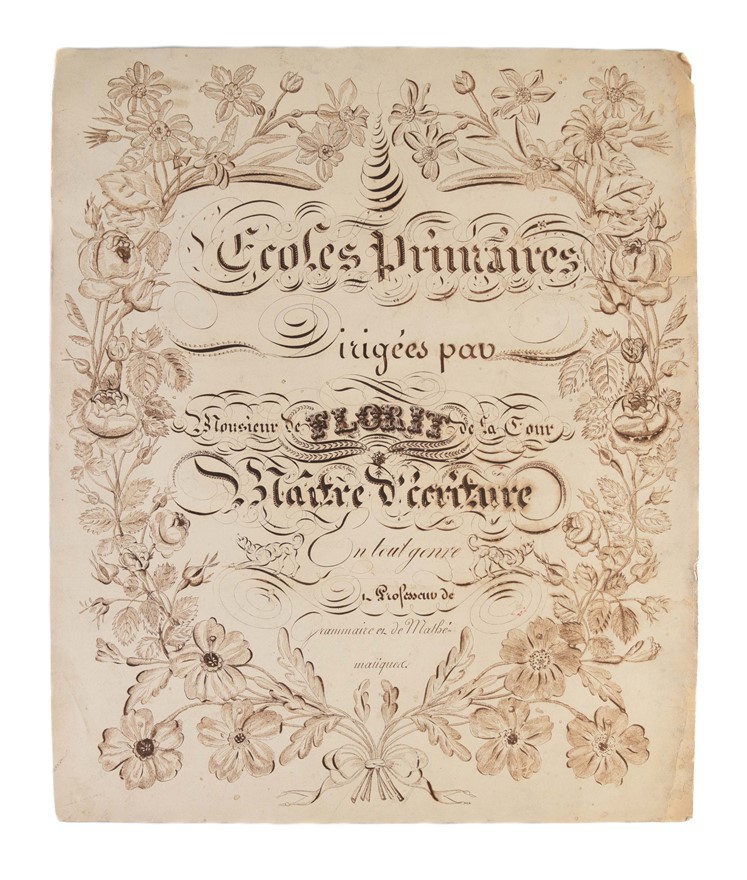Calligraphic advertisement sheet "Ecole primaires par Monsieur Florit de la Tour, Maître d'écriture en tout genre. Professeur de Grammaire et de Mathematique".
FRENCH POLYNESIA, ; FLORIT DE LA TOUR DE CLAMOUZE. Urbain de ([c.1835].)
£1750.00
Please contact us in advance if you would like to view this book at our Curzon Street shop.
PENMANSHIP SAMPLER CREATED AT THE FIRST INSTITUTE OF HIGHER EDUCATION IN POLYNESIA
Pen and ink on wove paper, laid down. Measuring 465 by 385mm. Numerous insect holes (consistent with its tropical origin) and points where the iron gall ink has burned through the paper. Slight losses to left hand margin, barely affecting image. Calligraphic penmanship decorated with an elaborate border of flowers, and two baying hounds rendered in pen flourishes. [Aukena Island,
Born into a French noble family, Comte Alphonse de Florit de la Tour de Clamouze (1784-1868) joined the Roman Catholic church as a lay brother, and took the name Urbain. In 1835 he participated in a mission organised by the Congregation of the Sacred Heart of Jesus and Mary to the Gambier Islands in French Polynesia. There he established and headed the Re'e Seminary College on Aukena Island, where Mangarevan boys were educated in Latin and French and the ways of the Catholic church, in order that they might too become clergymen. This school, also known as the College of Anaotiki, was the first such institution of higher learning in the South Pacific. Students included the young King Joseph Gregorio II, the last king or 'Akariki of the island of Mangareva, and other Gambier Islands.
Florit de la Tour remained in the Gambier Islands for almost thirty years, returning to France in 1863 just five years before his death. This penmanship sampler may well have been produced by one of his Native students, and serves also as a decorative advertisement or keepsake of the school itself. Such elaborate penmanship would have been a feature of Florit de la Tour's own noble education, and would likely have been supported by popular engraved French writing manuals of the day, like those by Bégat, Gariel Laurent, Dartiguenave and Pierre Picquet. Despite the richly biodiverse forests which covered many of the islands, the plants depicted on the sampler are distinctly European, including roses and narcissus. This suggests that they, and the hounds, are drawn directly from a specific manual.
Such manuscript produced in Polynesian mission schools is understandably scarce. We have seen no other examples of its kind.
Provenance: sold at Phillips in June 1969.
Stock Code: 246599




